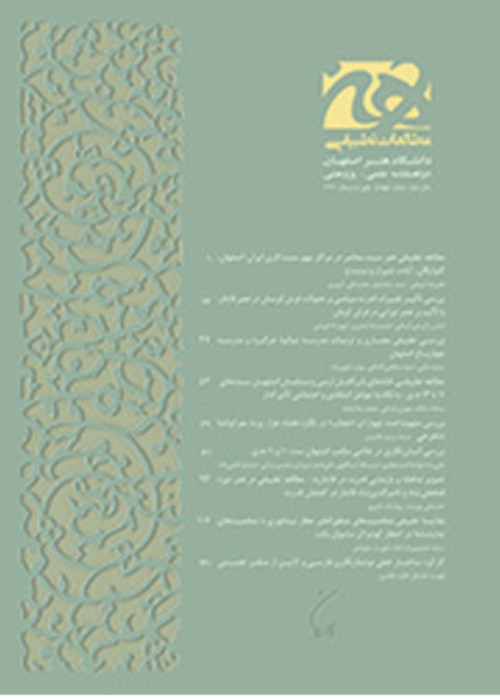Comparative Study of Architectural Space in the Prominent Safavid Caravanserais of Isfahan Bazaar
case study: Shah, Sarutaqi and Madar-Shah caravanserais
Author(s):
Abstract:
The welfare and safety of caravans have always been of great importance throughout the Persian history and this fact has led to the foundation of the buildings called caravanserai and its related elements. These buildings resolved communication and economic needs. Caravanserais can be divided into two kinds: city and intercity. Flourishing of Iran’s caravanserais in the Safavid era was due to the security, development of relationships with Europe and India by land or sea as well as development of foreign and domestic trade. In this period, prosperity in production and commerce, especially in Isfahan (capital of the Safavids), led to the establishment of urban caravanserais as a coherent element in the structure of the urban bazaar (market). Accordingly, the structure of bazaars and caravanserais was closely linked to each other and created variations in the caravanserais’ structure. Although, in time, caravanserais lost their primary role in relation to the bazaar’s needs and services, studies about these caravanserais are important. The present research seeks to answer the question of what changes have occurred in the Safavid caravanserais of Isfahan bazaar. This study has been executed using library and field studies and comparative method. The main purpose is to provide a typology of the Isfahan bazaar’s caravanserais in the Safavid era to respond to personal and social needs of traders and caravans, in addition to extracting common patterns in these caravanserais according to their residential and commercial functions. Recognizing these patterns can help designing commercial spaces proportionate with modern needs of the bazaar. These caravanserais, according to their construction period, are divided into three kinds: early, middle and late. Despite similarities in most types of Safavid caravanserais in Isfahan bazaar, some differences are seen as well in these buildings considering their structural relation to bazaar and its urban elements, caravanserai’s spatial composition, expanse, external form and type of entrances, courts, ivans (porches), ivanches (small porches) and ravaghs (porticoes), rooms and also caravanserai’s spatial diversity.
Keywords:
Language:
Persian
Published:
Journal of Motaleate-e Tatbighi-e Honar, Volume:4 Issue: 8, 2015
Page:
81
magiran.com/p1384706
دانلود و مطالعه متن این مقاله با یکی از روشهای زیر امکان پذیر است:
اشتراک شخصی
با عضویت و پرداخت آنلاین حق اشتراک یکساله به مبلغ 1,390,000ريال میتوانید 70 عنوان مطلب دانلود کنید!
اشتراک سازمانی
به کتابخانه دانشگاه یا محل کار خود پیشنهاد کنید تا اشتراک سازمانی این پایگاه را برای دسترسی نامحدود همه کاربران به متن مطالب تهیه نمایند!
توجه!
- حق عضویت دریافتی صرف حمایت از نشریات عضو و نگهداری، تکمیل و توسعه مگیران میشود.
- پرداخت حق اشتراک و دانلود مقالات اجازه بازنشر آن در سایر رسانههای چاپی و دیجیتال را به کاربر نمیدهد.
In order to view content subscription is required
Personal subscription
Subscribe magiran.com for 70 € euros via PayPal and download 70 articles during a year.
Organization subscription
Please contact us to subscribe your university or library for unlimited access!


